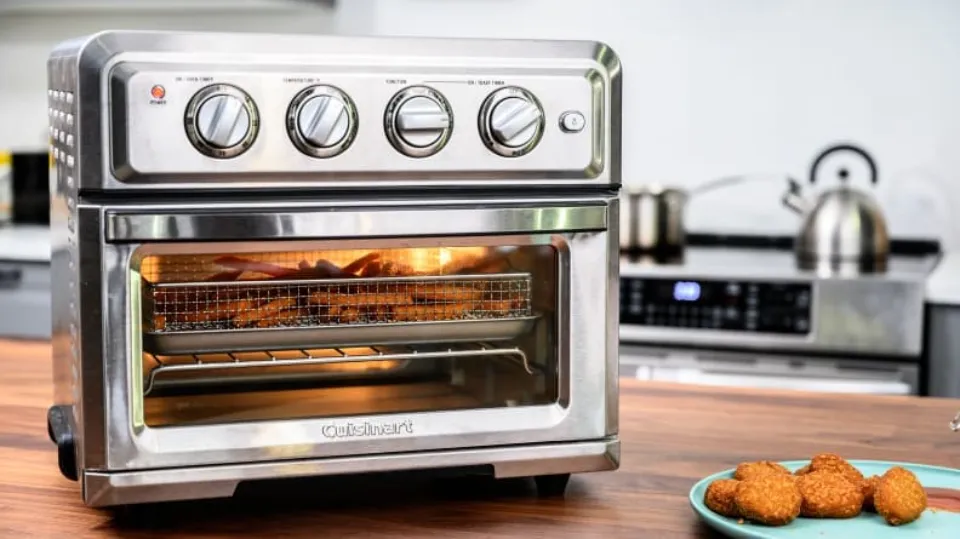How often, would you say, do chairs break? I’m going to open the bidding with “not very often”. God, no, I’m not saying that, not ever! I won’t allow myself to be forced into making such a ridiculous claim. That would be “Liz Truss will never be prime minister” all over again! But whenever I enter a room, I generally assume that the majority of the chairs will continue to be usable until I leave. Prime ministers used to be compared to presidents in the same way.
More often than not, you come across a chair that is practically already broken and showing saucy glimpses of the dowel, just waiting for the imps of fate to guide the ample posterior of a sensitive soul towards on some fairly public occasion, preferably while the soul is holding a large slice of gateau.
Right, how frequently do tables break? You can already tell it’s going to be a fascinating read. Well, that is basically never. I refer to dining room tables. Boardroom tables and dining room tables. Large wooden ones are timeless. But occasional tables aren’t permanent. They tend to nest for strength and are both occasional and mortal. They’re not exactly falling like flies, though, in my opinion.
Wardrobes next; well, the doors and any drawers are a weakness, but it’s all repairable and more easily repairable than the dowel-flaunting chair that has successfully enticed the rearward attentions of a now-tearful large-ass patisserie fan and had its joints turned to sawdust. It’s challenging to dismantle a wardrobe’s basic framework. In pictures from the blitz, I can picture them flapping open on the upper floors of defronted homes. There is nothing wrong with them that can’t be fixed with a few screws and some Pledge. Take that, Hitler!
How can this be, then, that there is always new furniture on sale? Why is it one of the most popular retail products? Old furniture doesn’t seem to be decomposing quickly enough to make room for all of this stuff, at least based on anecdotal evidence. It cannot be explained by the current, modest rate of population growth. I believe that people are discarding perfectly good furniture.
It seems to me that an Ikea chair that has been purchased relatively recently is very likely to break when a chair does break. Now that is just, I hasten to add for evident legal reasons, my personal feeling and unrepresentative experience, but if there is any truth to it, it may be because Ikea chairs are frequently put together by novices. That has nothing to do with Ikea’s manufacturing procedure, whose competence I wouldn’t dare question in a sentence that is already perilous. I’m referring to the fact that Ikea products are frequently put together by the company’s customers, who are statistically extremely unlikely to be skilled cabinet makers.
Flat-pack furniture has that drawback; you assemble it yourself, and then it breaks because you lack the necessary furniture-making skills. Ironically, this was one of the main reasons you made yourself go through the agony of visiting an out-of-town furniture store. It’s the opposite of those pricy cooking kits that provide detailed instructions and ingredients to give the impression that someone has prepared their own dinner. Ikea offers us the reasonably priced illusion that we haven’t had to construct our own furniture.
However, it’s no longer so cheap. It was reported last week that Ikea’s prices are soaring by up to 80% because, the retailer says, of “macro-economic developments… from the increased cost of materials and transportation to the war in Ukraine and inflation”. These dramatically expanding prices at a time of dramatically contracting disposable income must surely imperil the chain’s business model as well as spelling the end of thousands of dream lounges
By “dream lounge” Though I suspect those types of dream lounges may have also been impacted by macro-economic developments and are now having to reduce how often they give the bowls of translucent pebbles a rinse, I do not mean a new kind of therapy where the stressed and wealthy are invited into white and soothing rooms in order to snooze themselves less moany amid therapists who resolutely keep a straight face. No, I’m referring to the home makeover, which has become increasingly popular thanks to a variety of interior design-focused TV shows, and which involves an effort to make our homes appear more cheery, serene, tidy, or otherwise not so boring.
The Ikea price increase is not good news for those who need furniture. But for all those who just fancy a change, who are in the mood for chucking out perfectly good stuff and replacing it with a load of flat-pack crap (or “flat-crap” – like a cow pat, but marginally easier to assemble into a bookcase), It isn’t a bad thing, in my opinion. It is unsustainable from a financial and environmental standpoint for people to think that their homes’ interiors should follow fashion trends on a par with the clothes they wear.
To ensure that you never need to replace them, chairs should be quite expensive but well-made. The furnishings in your home should be expected to last as long as the wiring does. You shouldn’t have to touch it for a very long time, if ever, if it was done correctly. This is entirely positive news if it signals the end of home renovations and the return to the belief that you shouldn’t replace something unless it is irreparably damaged.
It would, however, close off another avenue of “economic growth”. I’m revealing myself as a fully-paid-up member of the anti-growth coalition, except there is no membership to pay because that would be economic activity which we in the coalition hate. In order to maintain the pointless cycle of disposal and repurchase, replacing chairs that don’t need replacing with ones that look a little different but don’t last, and if they do accidentally last, are rendered eye-wateringly unfashionable within a decade, doesn’t accomplish anything beneficial. Both the planet and us are damaged as a result. But it does increase GDP, which is now how politicians determine whether our society is worthwhile.
Where will it all go? A self-inflicted financial crisis, a looming winter of unrest, another Tory government in disarray, another unelected prime minister forced out, etc. It’s been a terrible few years for Britain: Brexit, Covid, political scandals, economic collapse.
Daily coverage of this national breakdown has been provided by Guardian journalists in the hope that the public will be better able to decide what is best for the nation after being informed of the facts. In the coming weeks and months, this will become even more crucial as the country demands a say in how this sorry saga ends.
The Guardian is not a publicly traded company and does not have a billionaire owner, unlike many others. Just the will and passion to produce high-impact global reporting that is never influenced by business or politics. Such reporting is essential for democracy, fairness, and putting pressure on the wealthy to improve.
And we make all of this available for free, so anyone can read it. We act in this manner because we support information equality. More people will be able to follow the developments that are changing the world, comprehend how these events affect individuals and communities, and be motivated to take meaningful action. No matter their financial situation, millions can gain from free, open access to high-quality, accurate news.
Read More:
- Food Processor vs Food Chopper – Differences You Need To Know
- 11 TV Stand Decor Ideas – Great & Stunning
- Whole Beast Protein Review In 2022: Is It A Legit Or Scam?
- Crux Air Fryer Review 2022 – Should You Buy It?
- Younique Lash Primer Review 2022 – What You Should Before Buying
- Sur La Table Air Fryer Review: Is It Worth Buying?
- Top 10 Arch Relief Plus To Buy In 2022








